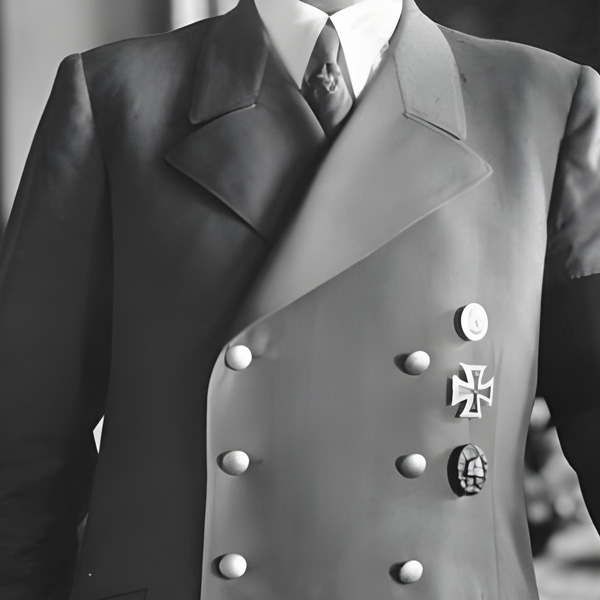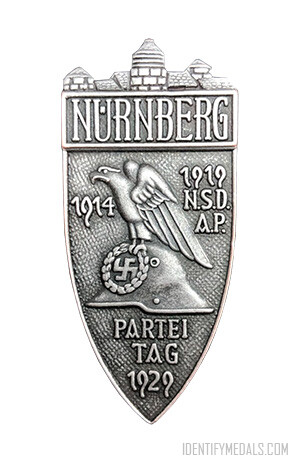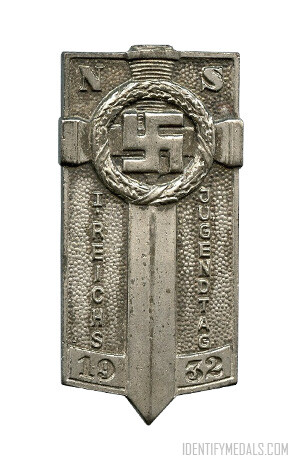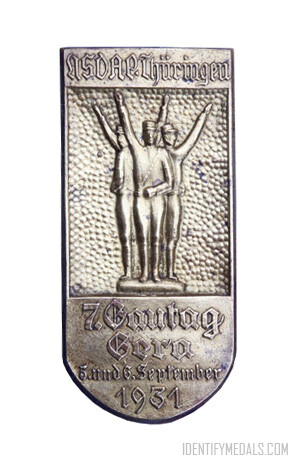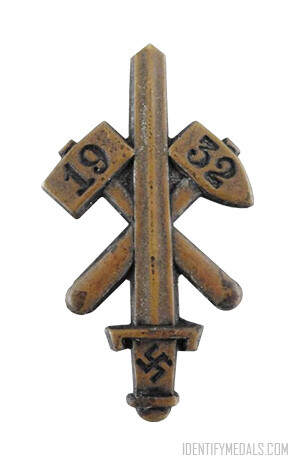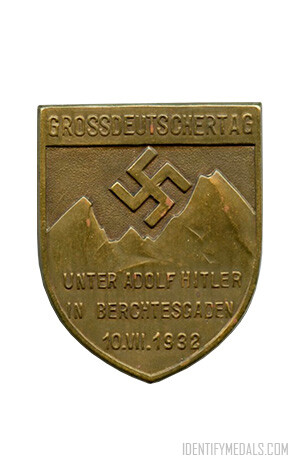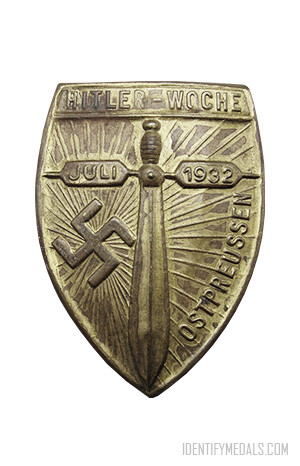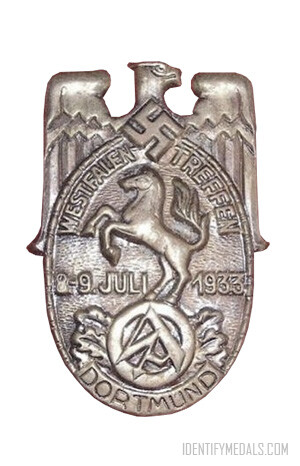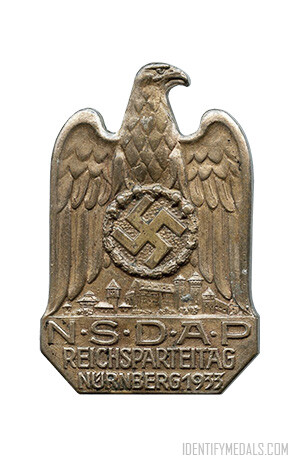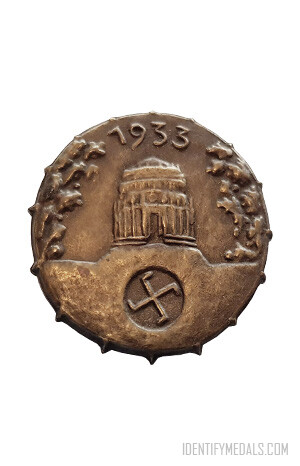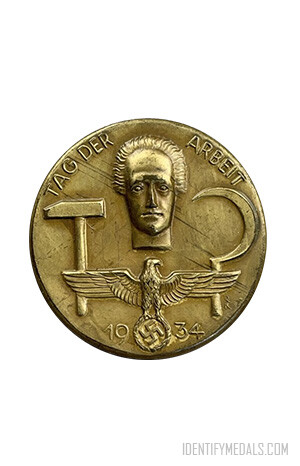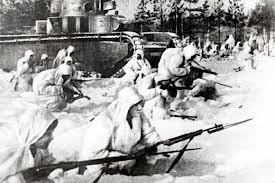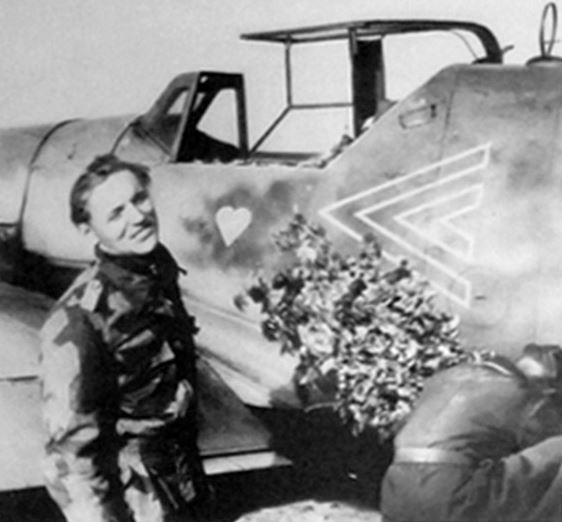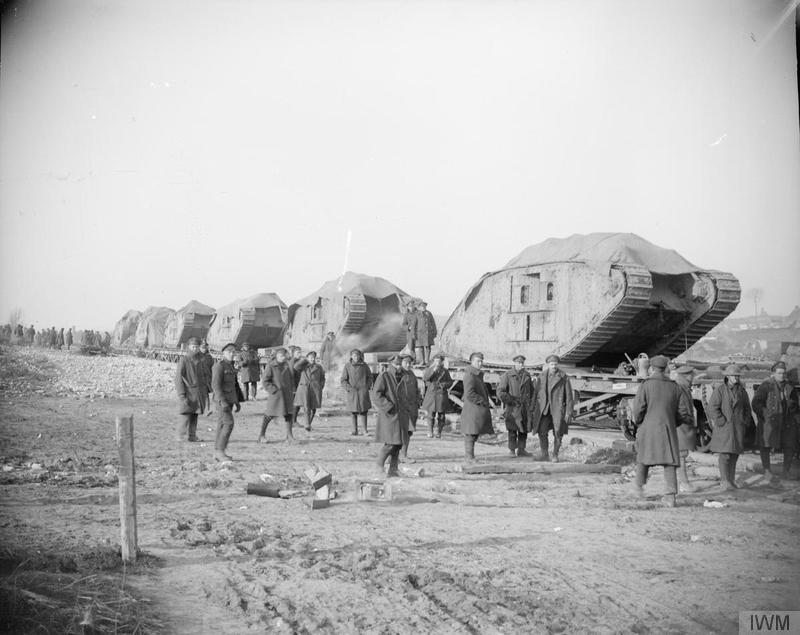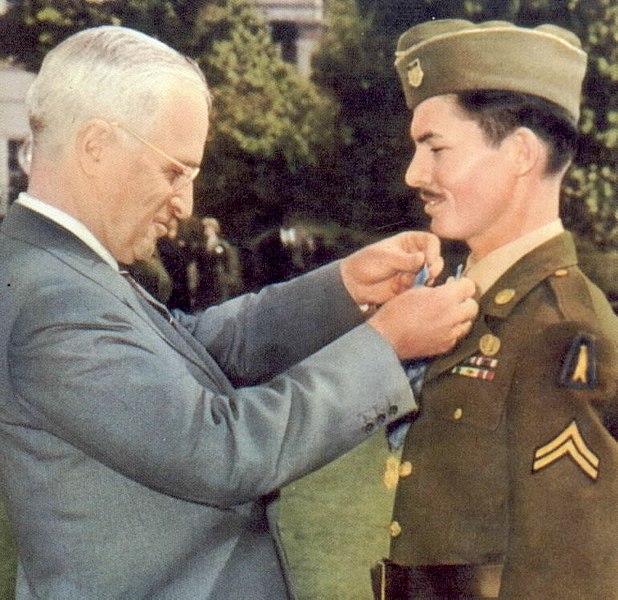Adolf Hitler wore and received medals for several reasons. During World War I, for instance, he served as a soldier in the Bavarian Army during World War I. His role as a dispatch runner was dangerous, involving carrying messages between command posts and front lines under fire.
As the leader of the Nazi Party, Hitler also received medals that reflected his central role in the party and its activities. For example, the Golden Party Badge of the NSDAP was awarded in 1933 and was a mark of his status and contributions to the Nazi Party.
Here are the medals worn by Adolf Hitler both during his military career and political tenure:
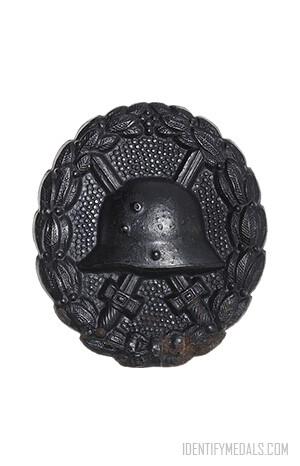
The Wound Badge (1918)
The Wound Badge (Verwundetenabzeichen) is a military decoration awarded to wounded or frostbitten soldiers during World War I.
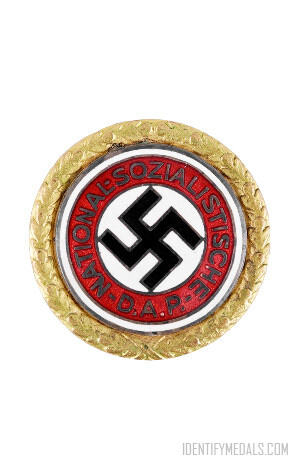
The NSDAP Golden Party Badge
The NSDAP Golden Party Badge was one of the most prestigious decorations awarded by the party during the Third Reich era in Germany.
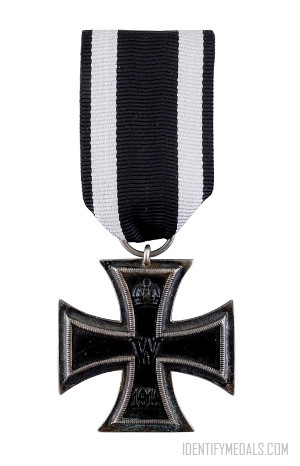
The Iron Cross (EK 1914)
The Iron Cross (Eisernes Kreuz or EK) is a military decoration established by King Friedrich Wilhelm III of Prussia in March 1813.
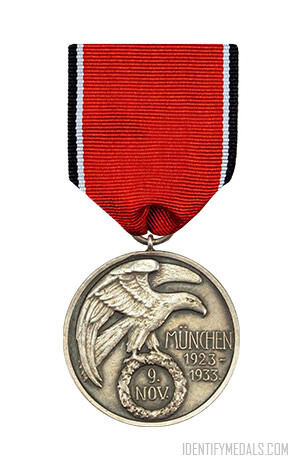
The Blood Order or Blutorden
The Blood Order or Blutorden was a highly prestigious Nazi Party decoration established by Adolf Hitler in March 1934.
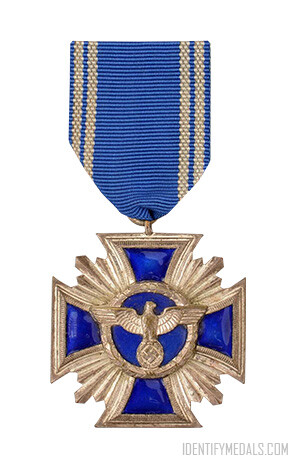
The Nazi Party Long Service Award
The Nazi Party Long Service Award was a distinguished political decoration presented in the form of a badge by the Nazi Party.
The Tinnies
Adolf Hitler also wore some tinnies, or small badges. These were commonly produced for Third Reich events and were usually mad of cheaper metal.
These events were pivotal in the Nazi Party’s strategy to build support, disseminate propaganda, and solidify their control over Germany. Each rally or celebration served to project the power and unity of the Nazi movement and to cultivate a sense of belonging among their followers. Many people bought them as souvenirs.
The Reichsparteitag Nurnberg Badge
2-4 August 1929
The Reichparteitag, or Nuremberg Rally, of 1929 was the first major propaganda event held by the Nazi Party in Nuremberg. This rally marked the Nazi Party’s growing influence in German politics and was used to showcase their ideology and military discipline.
The Reichsjugendtages Potsdam Badge
1-2 October 1932
The First Reich Youth Day in Potsdam was a significant event aimed at mobilizing the German youth under the Nazi banner. This event was part of the broader Nazi strategy to indoctrinate young Germans with their ideology.
The Gera's Gauparteitag Badge
5 September 1931
Gera’s Gauparteitag was a regional Nazi Party meeting held in Gera. These regional gatherings (Gauparteitag) were important for consolidating party support at the local level and mobilizing party members and supporters.
The Gautag in Essen Badge
30 October 1932
The Gautag in Essen was another regional Nazi rally. Held in the industrial heartland of Germany, such events were crucial for the Nazis to garner support among the working class and industrial workers.
The Grossdeutscher Tag Berchtesgaden Badge
10 July 1932
The “Greater German Day” in Berchtesgaden was a Nazi rally aimed at promoting the idea of a Greater Germany that would include all German-speaking peoples. Berchtesgaden was also significant as it was near Hitler’s mountain retreat.
The Hitler Woche in Königsberg Badge
17 July 1932
“Hitler Week” in Königsberg was a week-long series of events designed to promote Adolf Hitler and the Nazi Party in the East Prussian city of Königsberg. Such events were part of the broader strategy to solidify Hitler’s image and the party’s popularity across Germany.
The Dortmund SA Rally 1932 Badge
9 July 1933
This rally in Dortmund was an SA (Sturmabteilung) event, emphasizing the paramilitary organization’s loyalty to Hitler and its role in enforcing Nazi policies and suppressing opposition.
The Reichparteitag 1933 Badge
30 August – 3 September 1933
The Reichparteitag of 1933, also known as the “Rally of Victory,” was the first Nuremberg Rally after Hitler’s rise to power. It celebrated the Nazi seizure of power and showcased the unity and strength of the Nazi regime.
The Befreiungsfeier in Kelheim Badge
22 October 1933 (source)
The “Liberation Celebration” in Kelheim commemorated the Nazi Party’s political victories and the consolidation of power in 1933. These celebrations were used to reinforce the narrative of liberation from the Weimar Republic and the triumph of Nazi ideology.
The Tag der Arbeit 1934 Badge
1 May 1934
“Tag der Arbeit” or “Day of Labor” was the Nazi celebration of International Workers’ Day. The Nazis co-opted this day to align the labor movement with Nazi ideology, promoting the message of national solidarity and labor’s role in the Nazi state.
Other Awards Given to Hitler
Adolf Hitler received numerous awards throughout his life due to his involvement in World War I, his membership in the Nazi Party (NSDAP) and the SS, and his roles as the Führer and commander-in-chief of the German military.
World War I awards
- Iron Cross, Second Class – 12 February 1915
- Bavarian Cross of Military Merit, Third Class with Swords – 17 September 1917
- Regimental List Diploma – 5 May 1918
- Wound Badge in Black – 18 May 1918
- Iron Cross, First Class – 4 August 1918
- Bavarian Medal of Military Service, Third Class – 25 August 1918
- Cross of Honor with Swords – 13 July 1934
Political badges
- 1929 Reichsparteitag badge – 2 September 1929
- Brunswick Rally Badge – 1931
- Coburg Badge – 1932
- Golden Party Badge – 1933
- Blutorden – 1934
Awards of the SS (Adolf Hitler was supreme commander of the SS (SS member #1) and qualified for two SS awards, which he never wore)
- SS Zivilabdzeichen (#1) – 1934
- SS Long Service Award (25 years)
NSDAP awards
- Party Long Service Award (25 years)
- Gau Badges
- Golden Hitler Youth Badge (with oak-leaves)
- Honor Chevron for the Old Guard
- Civil decorations of the Third Reich
WWII awards (As supreme commander of the armed forces and commander in chief of the army, Hitler qualified for some military decorations, which he never wore)
- Anschluss Medal
- Sudetenland Medal (with Prague Castle bar)
- Memel Medal
- West Wall Medal (with 1944 bar)

